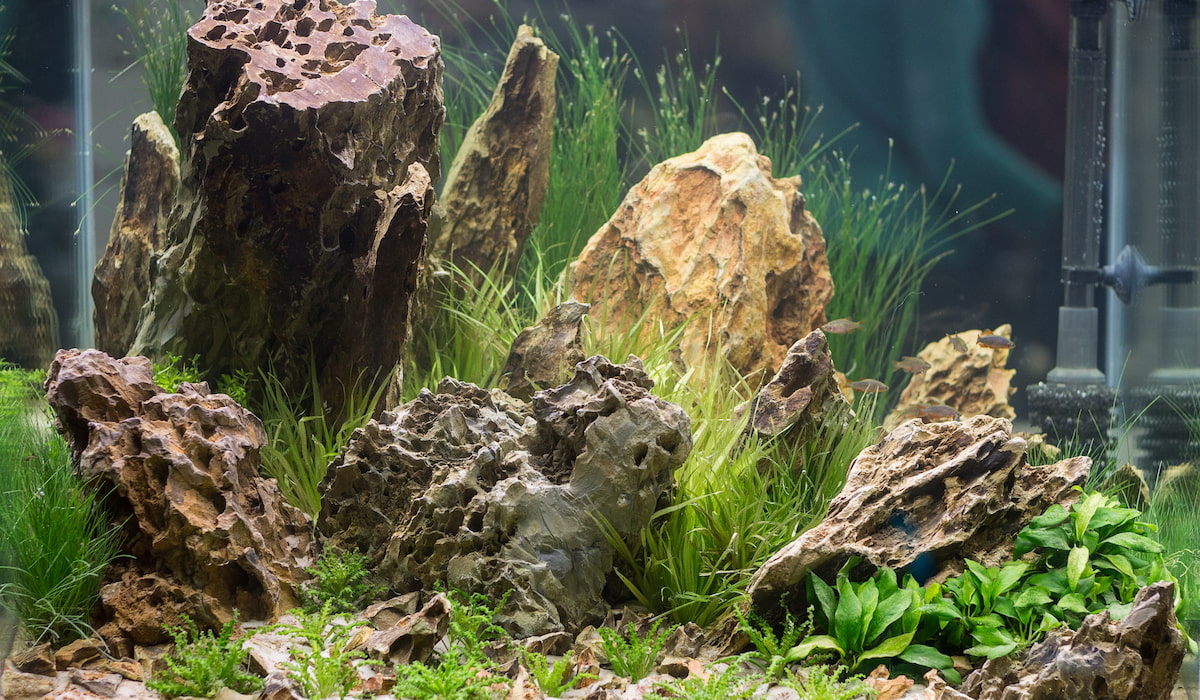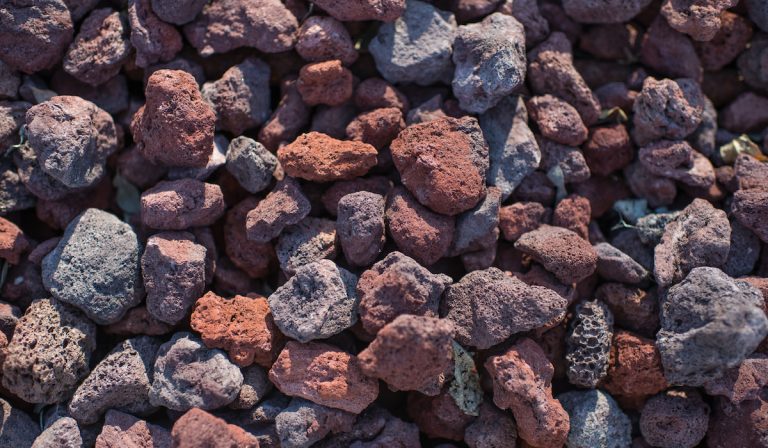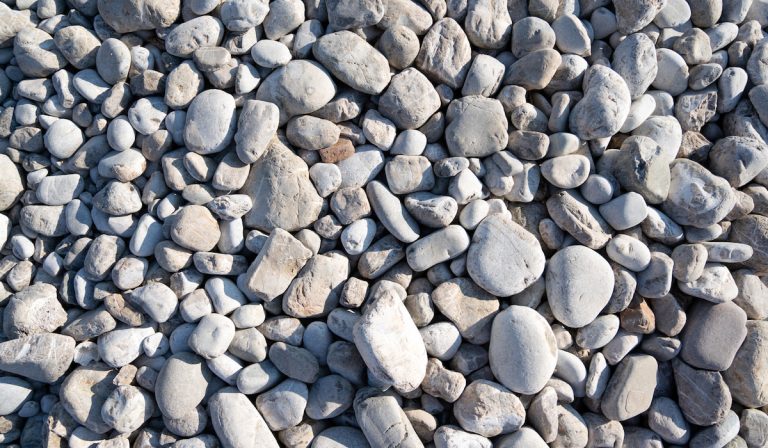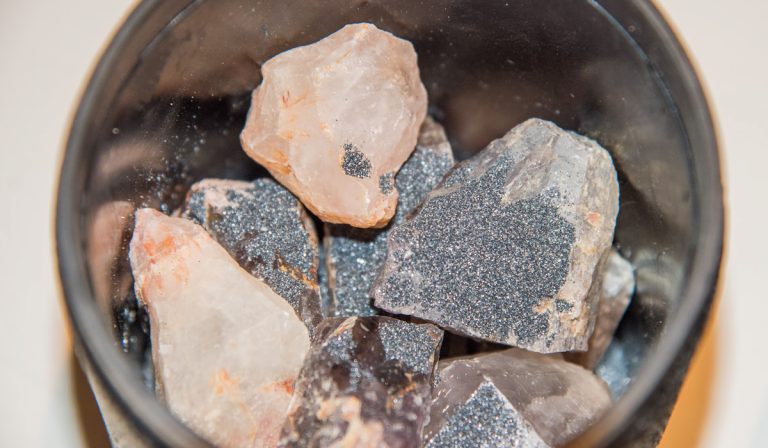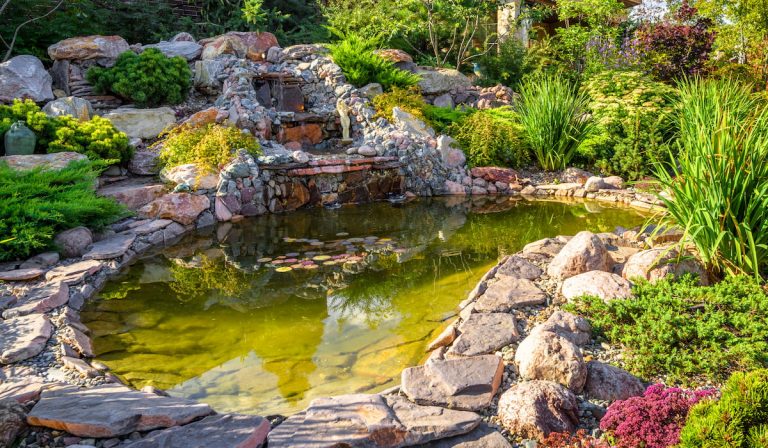How to Test Rocks for Use in an Aquarium (the Ultimate Guide)
Do you have unique rocks that you’d love to add to your aquarium? Natural rocks can boost the appearance of your aquarium and your visitors will stare in awe at their beautiful colors. Before adding your rocks to your aquarium, you need to test them to make sure they are safe for your aquarium fish.
Depending on what you are trying to study in the rocks, you can test rocks for how they affect the water pH by using vinegar, hardness by using a water hardness toolkit, and algae by soaking the rocks in water, along with other parameters by suitable methods.
It is important that you test your rocks first before you add them to the aquarium.
Why should you test the rocks? How do you know that the rocks are safe for the aquarium? We’ll answer these questions and more in the rest of this article.

Why Testing Rocks Before Placing Them in the Aquarium Is Important
If you are not careful, you can kill your aquarium fish if you use any type of rock in your aquarium. You must test the rocks for various reasons to include:
1. Rocks Can Change Water Quality Negatively
Rocks alter the quality of your aquarium water if you are not careful. Here are some physiochemical water attributes that untested and untreated rocks can rapidly alter:
- pH: Rocks rich in calcium carbonate will increase the pH of your aquarium and this can affect your fish or even kill them if they are acid-loving.
- Methane: When you use grit or other rocks in your planted aquarium, they can block dissolved oxygen from reaching the roots of some plants. The lack of dissolved oxygen can cause your plants to start rotting from below. The presence of methane in your aquarium indicates that your plants are rotting from below.
- Hardness: If you do not properly wash rocks to remove the grit and powder that accompanies them, they will increase the water hardness and possibly introduce pollutants into the aquarium.
As you can see, you need to test rocks so that they do not change the aquarium water quality negatively.
2. Rocks Can Contain Contaminants and Pollutants
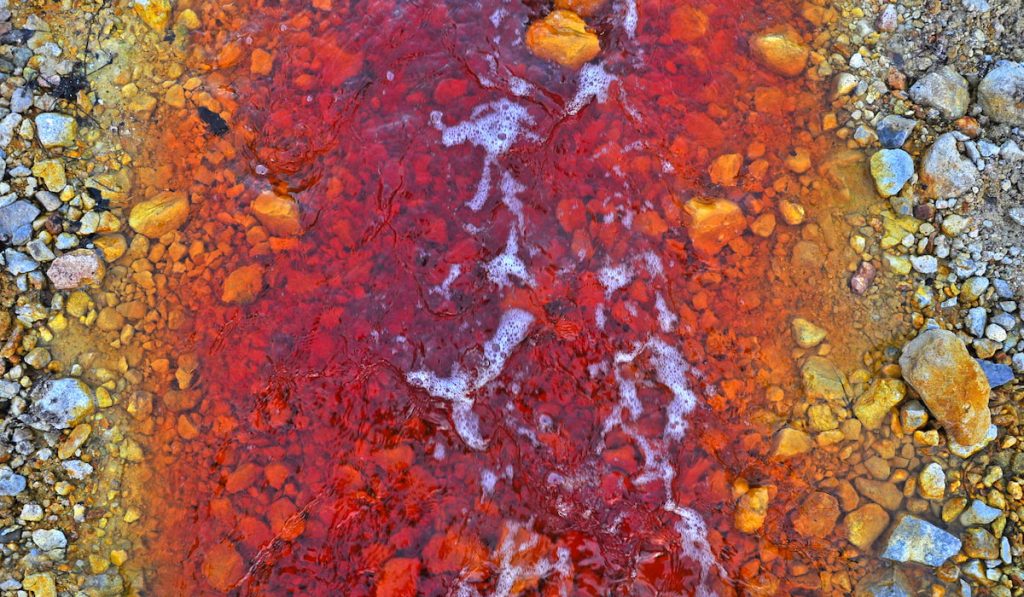
Some rocks can come with pollutants especially if there are a lot of human activities in the area where you collected the rocks from.
Pollutants such as micro-plastics, dust, metals, etc. can come with the rocks, so you need to make sure that every rock is safe (by testing the rocks) before you place them in the aquarium.
3. Rocks Can Cause Algae Bloom in the Aquarium
If you do not test your rocks for the presence of microbes such as algae, the rocks will cause algae to bloom in your aquarium.
Testing the rocks for algae after washing them is an important step in rock preparation to make sure that the rocks are safe for your aquarium.
How to Test Rock for Aquariums
The first step to test rocks for aquariums is to wash them. You should wash away dust, grit, and cracked parts from the rocks as they can affect your aquarium whether you wash them or not.
When you have washed the rocks, follow the steps below to test them:
1. Testing Rocks for Calcium Carbonate

Calcium carbonate is a compound that can increase the pH of water in your aquarium. There are two easy and common ways to test for calcium carbonate in rocks:
- Vinegar: Simply pour vinegar on the rocks. If you see foam bubbling on the surface of the rocks, there is calcium carbonate in or on the rock. You can wash the rocks and test them again or simply discard those rocks (i.e. do not use it in your aquarium).
- Regular pH Test: Soak the rocks in water. Test the water pH daily for a week. If the pH continues to increase daily, you should not use the rock in your aquarium.
Remember that calcium carbonate can kill fish that prefer more acidic conditions.
2. Testing for Algae
It is easy to test your rocks for the presence of algae. You should know that the chance of rocks collected from damp or wet places containing algae is very high, so you must test these rocks for algae.
To test rocks for the presence of algae (and perhaps other microbes that grow in colonies), soak the rock in water for a while (at least 4-5 days).
If you see more green spots growing on the rocks, they indicate the presence of algae on the rocks. Don’t worry. All you have to do is properly wash and sterilize the rocks.
3. Testing for Hardness
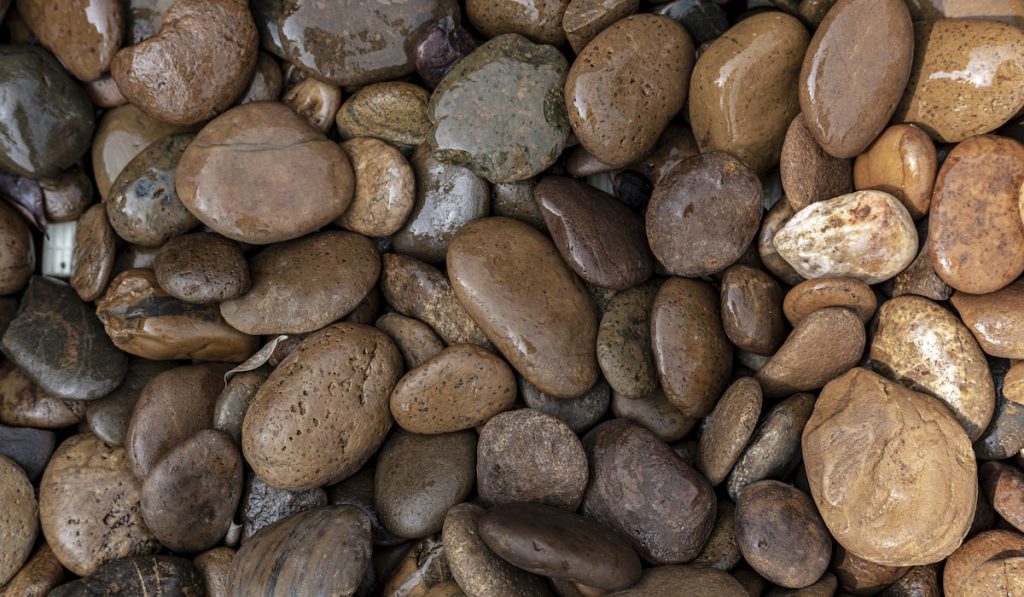
It is very easy to test the rocks for hardness. You are actually testing the rocks for the way they affect the water hardness. To test the rocks for hardness, soak them in water for several days.
Test the water hardness daily and check if it increases significantly. If it does, the rock is not suitable for aquariums.
4. Testing for Contaminants and Pollutants
If you collected the rocks from a polluted place, you should not use them in your aquarium. Testing rocks for pollutants or contaminants can be expensive as it involves taking them to nearby labs or extension centers.
You can, however, simply research the area you collected the rocks from to know if rocks from such places are safe.
5. Testing if the Rock Is Compatible with Your Aquarium Fish
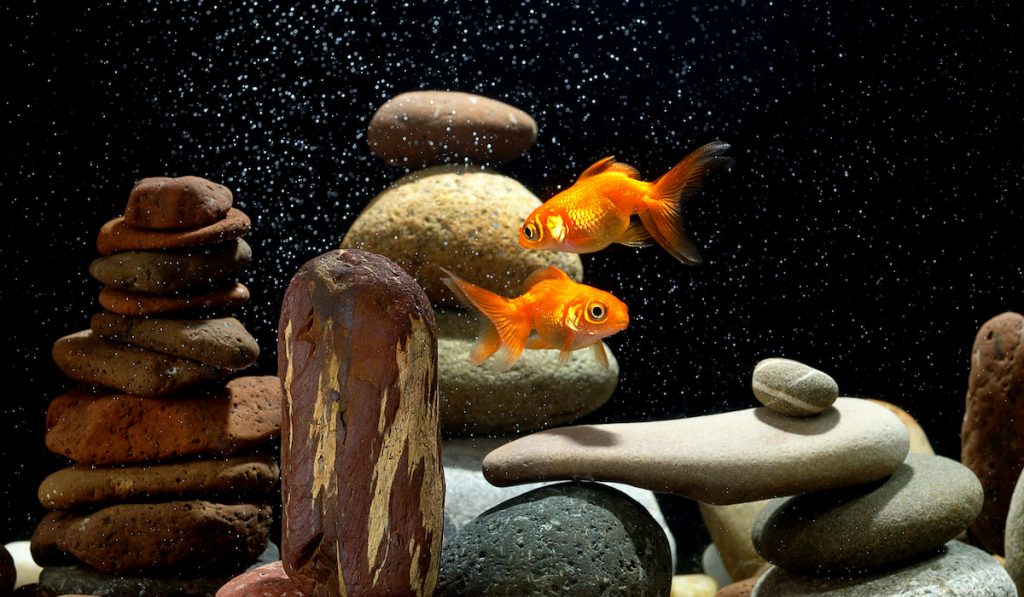
To know if the rocks are compatible with your aquarium fish, place the rocks in a container and keep one or two fish in that container. If the fish do not like the rocks, they will appear stressed or unrelaxed.
You can compare the fish with the rocks with those in another tank where there are no rocks to see if they have similar or different behaviors.
Also, it is good practice to examine the fish to determine if their health is affected by the rocks in any way.
For these tests to be accurate, make sure that you have washed the rocks carefully before testing them.
How to Prepare Rocks for the Aquarium
It is easy to prepare rocks to be used in aquariums. If you have tested the rocks and concluded that they are safe, here’s how to prepare them:
1. Wash the Rocks
Scrub the rocks in sterilized water with a brush and then bleach or boil them to remove all microbes, grit, and dust from their surface.
2. Dry the Rocks
Expose the rocks to sunlight and allow them to dry for 1-2 days. This step can help inhibit the growth of water-loving microbes such as algae.
3. Soak the Rocks
You should soak the rocks for some days. Soak them with water in a clear container through which you can examine the rocks. Check if algae are growing on the rocks and rewash them if you see any signs of algae growth.
4. Rinse the Rocks
If the rocks are free from algae, rinse them with warm water. They are now ready to be used in the aquarium.
5. Place the Rocks in the Aquarium
Be careful when adding the rocks to the aquarium. Do not throw them into the aquarium as you can break the glass. Carefully place them.
Congratulations!!! You just tested, washed, and added rocks into your aquarium.
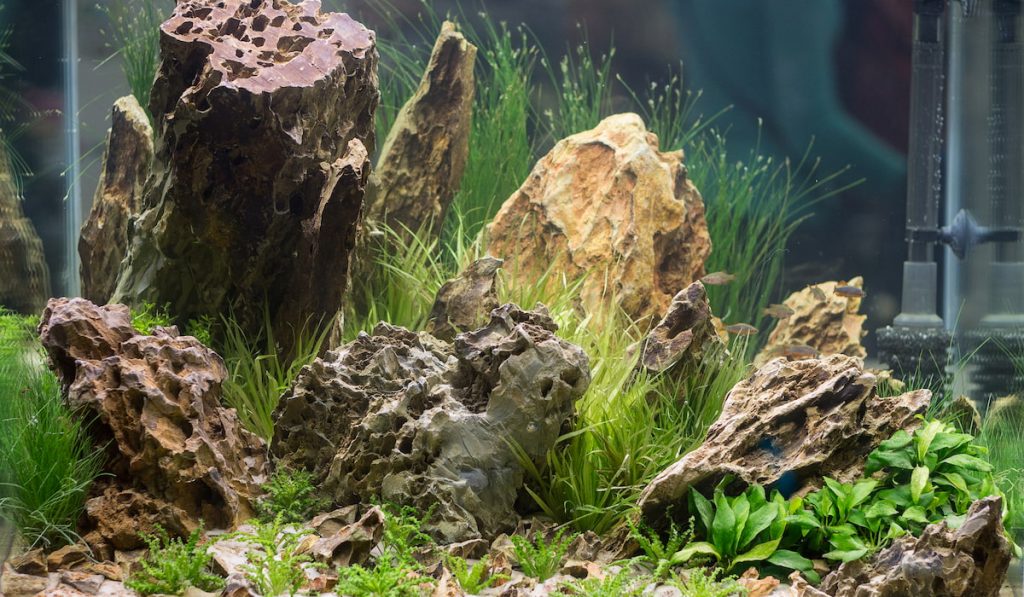
Related Questions and Answers
1. What is the Safest Rock to Use in an Aquarium?
The safest rocks to use in an aquarium are rocks bought from pet or aquarium stores. Any rock collected from rivers, quarries, and other places must be tested and washed before being used in the aquarium.
2. How Do You Clean or Replace Aquarium Rocks?
You can clean or replace rocks in your aquarium by first reducing the amount of water in the aquarium. Drain away the water and carefully transfer your fish into another tank.
You can now remove the rocks and clean or replace them.
3. Can You Use River Rocks for Aquariums?
River rocks are safe for aquariums. You just have to make sure that the rocks in or around the river near you are collectible and usable. Take note of the following:
- Check Local Laws: If there are local guidelines about river rocks in your area, make sure that you follow the laws.
- Check the River pH: If the water pH is high, it could mean that rocks could also increase the pH of your aquarium.
- Water Pollution: Is there a nearby factory near the river? Is the river polluted? You should consider these before using rocks from rivers in aquariums.
If the rocks are safe to collect and use, prepare them and add them to your aquarium.
4. What Types of Rocks Should You Use or Avoid in Aquariums?
Here are some types of rocks that are safe for use in aquariums:
- Slate
- Granite
- Quartz
- Lava rock
- Sandstone
- Onyx
Some types of rocks that you should not use in your aquariums are:
- Crushed corals
- Shells
- Marble
- Limestone
- Geodes
Remember that using the wrong type of rock can harm your aquarium fish.
5. Where Can You Find Rocks for Your Aquarium?
You can find rocks from a lot of different places. For example:
- Rivers
- Quarries
- Pay-to-dig sites
- Landscape companies
- Garden shops and nurseries
Final Thoughts
You should test rocks before using them in your aquarium. Be sure to test the rocks for calcium carbonate, hardness, algae, and other qualities. Only use safe rocks in your aquarium.
Resources
- https://www.thesprucepets.com/using-outdoor-gravel-or-rocks-in-an-aquarium
- https://www.plantedtank.net/threads/how-to-properly-test-rocks-for-an-aquarium
- https://www.fishkeepingwisdom.com/prepare-aquarium-rocks
- https://www.bettafish.com/threads/how-do-you-test-rocks-to-be-aquarium-safe
- https://aquariumtidings.com/adding-rocks-to-aquarium

